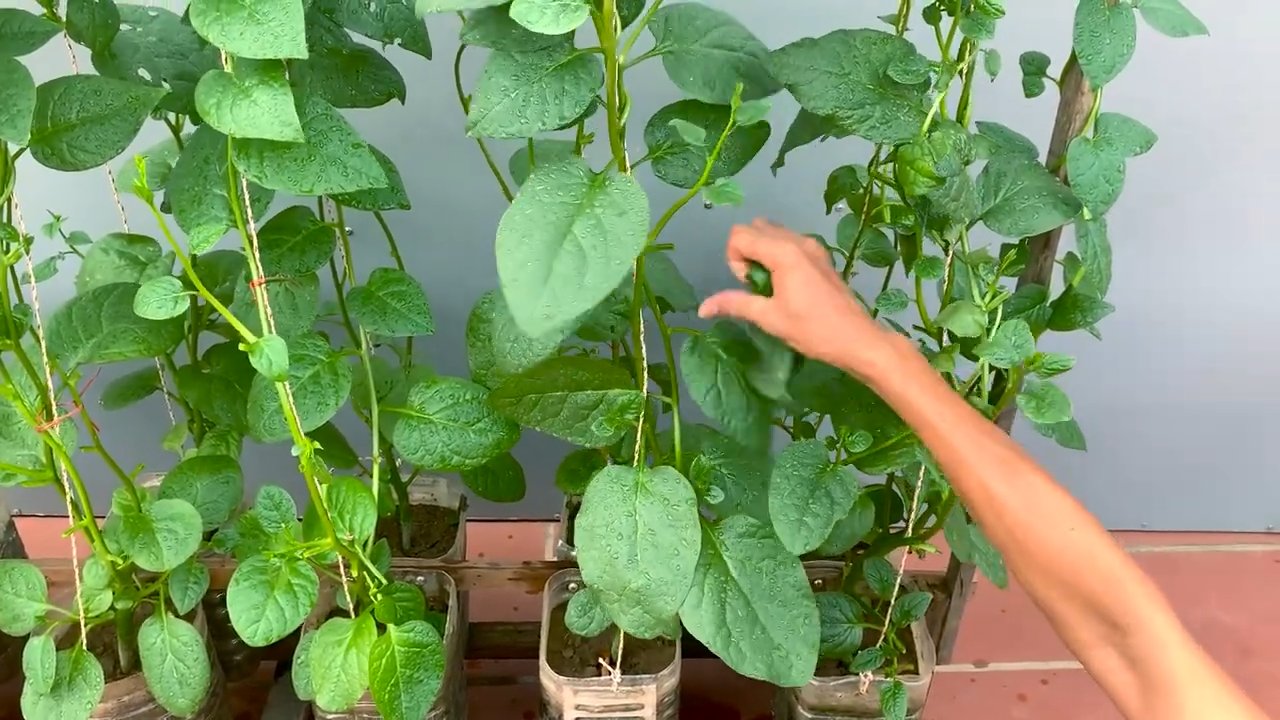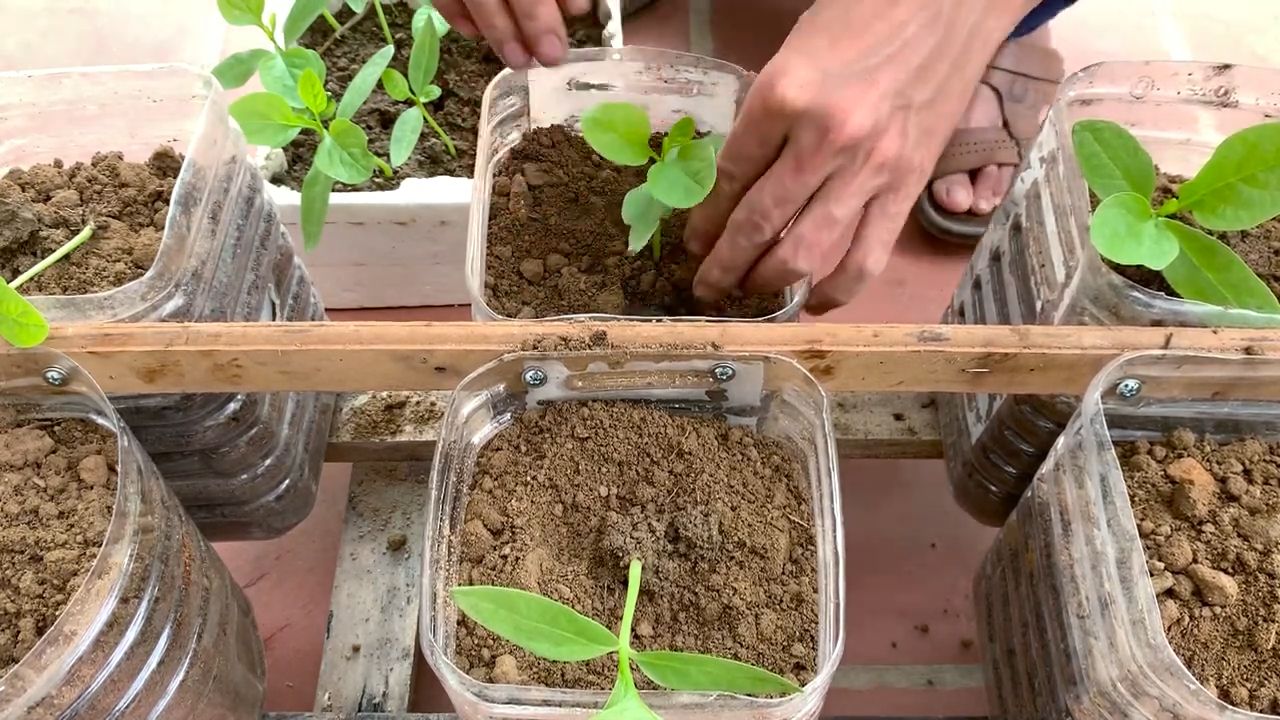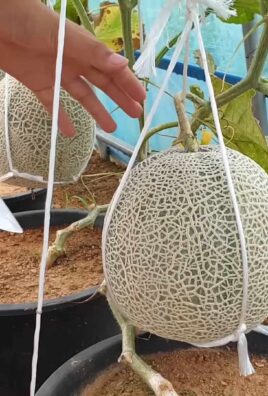Grow Spinach at Home, even if you think you don’t have a green thumb! Have you ever dreamed of stepping outside your back door and harvesting fresh, vibrant spinach for your salad or smoothie? It’s easier than you think, and this DIY guide will unlock the secrets to successful home-grown spinach, regardless of your gardening experience.
Spinach, with its rich history dating back to ancient Persia, has been a nutritional powerhouse for centuries. From Popeye’s legendary strength to its starring role in countless culinary creations, spinach has earned its place as a beloved and beneficial vegetable. But why rely on store-bought spinach when you can cultivate your own, bursting with flavor and packed with even more nutrients?
In today’s world, knowing where your food comes from is more important than ever. Growing your own spinach allows you to control the entire process, ensuring it’s free from harmful pesticides and chemicals. Plus, there’s nothing quite like the satisfaction of nurturing a plant from seed to harvest. This DIY article will provide you with simple, effective tricks and hacks to grow spinach at home successfully, even in small spaces. We’ll cover everything from choosing the right variety to protecting your plants from pests, so you can enjoy a continuous supply of fresh, healthy spinach all season long. Let’s get started!

Grow Your Own Delicious Spinach: A Beginner’s Guide
Hey there, fellow garden enthusiasts! I’m so excited to share my secrets for growing spinach right in your own backyard (or even on your balcony!). Fresh, homegrown spinach is so much tastier than the stuff you get at the store, and it’s incredibly rewarding to nurture your own leafy greens. This guide will walk you through everything you need to know, from choosing the right spot to harvesting your bounty. Let’s get started!
What You’ll Need
Before we dive in, let’s gather our supplies. Here’s a checklist of everything you’ll need to successfully grow spinach:
* Spinach Seeds: Choose a variety that suits your climate. I personally love ‘Bloomsdale Long Standing’ for its heat tolerance and ‘Winter Bloomsdale’ for cooler weather.
* Potting Mix (if growing in containers): A well-draining mix is crucial.
* Garden Soil (if growing in the ground): Amend your soil with compost for added nutrients and drainage.
* Compost or Aged Manure: This will enrich your soil and provide essential nutrients.
* Gardening Gloves: Protect your hands from dirt and potential irritants.
* Hand Trowel or Garden Fork: For preparing the soil and transplanting seedlings.
* Watering Can or Hose: For consistent watering.
* Fertilizer (Optional): A balanced, water-soluble fertilizer can boost growth.
* Row Covers (Optional): To protect your spinach from pests and extreme weather.
* Containers (if growing in containers): Choose pots that are at least 6 inches deep.
Choosing the Right Location
Spinach thrives in cool weather, so timing is key. It prefers full sun (6-8 hours of direct sunlight per day) but can tolerate partial shade, especially in warmer climates.
* Sunlight: Aim for at least 4 hours of sunlight daily.
* Soil: Spinach needs well-drained soil that’s rich in organic matter.
* Temperature: The ideal temperature range for spinach is between 50°F and 70°F.
* Timing: Plant spinach in early spring or early fall for the best results.
Preparing the Soil
Whether you’re growing in the ground or in containers, proper soil preparation is essential.
* For Garden Beds:
* Clear the area of any weeds, rocks, and debris.
* Loosen the soil with a garden fork or tiller to a depth of at least 12 inches.
* Incorporate a generous amount of compost or aged manure into the soil. This will improve drainage, fertility, and water retention.
* Rake the soil smooth and level.
* For Containers:
* Choose a container that’s at least 6 inches deep and has drainage holes.
* Fill the container with a high-quality potting mix.
* Mix in some compost or aged manure for added nutrients.
Planting Your Spinach Seeds
Now for the fun part – planting!
1. Sowing Seeds Directly in the Ground:
* Create shallow furrows in the soil, about ½ inch deep and 1 inch apart.
* Sow the spinach seeds thinly in the furrows, spacing them about 1 inch apart.
* Cover the seeds with a thin layer of soil and gently pat down.
* Water the area thoroughly but gently, being careful not to wash away the seeds.
2. Starting Seeds Indoors (Optional):
* Fill seed trays or small pots with potting mix.
* Sow 2-3 seeds per cell or pot, about ½ inch deep.
* Water gently and keep the soil consistently moist.
* Place the trays in a warm, sunny location or under grow lights.
* Once the seedlings have developed a few true leaves (about 2-3 weeks), you can transplant them outdoors.
3. Transplanting Seedlings:
* Harden off the seedlings by gradually exposing them to outdoor conditions for a week before transplanting.
* Choose a cloudy day to transplant to minimize stress on the seedlings.
* Dig small holes in the prepared soil, spacing them about 4-6 inches apart.
* Gently remove the seedlings from their containers and place them in the holes.
* Backfill with soil and water thoroughly.
Caring for Your Spinach Plants
Consistent care is key to a bountiful spinach harvest.
1. Watering:
* Keep the soil consistently moist, but not waterlogged. Water deeply whenever the top inch of soil feels dry to the touch.
* Water in the morning to allow the foliage to dry before nightfall, which can help prevent fungal diseases.
2. Fertilizing (Optional):
* If your soil is poor, you can fertilize your spinach plants with a balanced, water-soluble fertilizer every 2-3 weeks.
* Follow the instructions on the fertilizer package carefully.
3. Weeding:
* Keep the area around your spinach plants free of weeds. Weeds compete with spinach for nutrients and water.
* Hand-pull weeds carefully to avoid disturbing the spinach roots.
4. Pest and Disease Control:
* Keep an eye out for common spinach pests like aphids, slugs, and leaf miners.
* You can control aphids with a strong spray of water or insecticidal soap.
* Slugs can be controlled with slug bait or by hand-picking them off the plants.
* Leaf miners can be controlled by removing and destroying infested leaves.
* To prevent fungal diseases, ensure good air circulation and avoid overwatering.
* Consider using row covers to protect your spinach from pests and extreme weather.
5. Bolting Prevention:
* Spinach is prone to bolting (going to seed) in hot weather.
* To prevent bolting, plant spinach in early spring or early fall, and provide shade during the hottest part of the day.
* Choose heat-tolerant varieties like ‘Bloomsdale Long Standing’.
* Harvest your spinach regularly to encourage continued leaf production.
Harvesting Your Spinach
Harvesting is the most rewarding part!
1. When to Harvest:
* You can start harvesting spinach leaves when they are about 4-6 inches long.
* Harvest the outer leaves first, leaving the inner leaves to continue growing.
* Harvest regularly to encourage continued leaf production and prevent bolting.
2. How to Harvest:
* Use a sharp knife or scissors to cut the leaves off at the base of the plant.
* Avoid pulling the leaves, as this can damage the plant.
3. Storing Your Harvest:
* Wash the spinach leaves thoroughly and dry them with a salad spinner or paper towels.
* Store the spinach in a plastic bag in the refrigerator for up to a week.
* For longer storage, you can freeze spinach. Blanch the leaves in boiling water for 2 minutes, then plunge them into ice water. Drain well and freeze in freezer bags.
Troubleshooting
Even with the best care, you might encounter some challenges. Here are a few common problems and how to address them:
* Yellowing Leaves: This could be a sign of nutrient deficiency. Try fertilizing with a balanced fertilizer.
* Slow Growth: This could be due to poor soil, lack of sunlight, or cool temperatures. Amend your soil with compost, ensure adequate sunlight, and consider using row covers to warm the soil.
* Pest Infestation: Identify the pest and use appropriate control measures, such as insecticidal soap or hand-picking.
* Bolting: Plant spinach in early spring or early fall, provide shade during the hottest part of the day, and choose heat-tolerant varieties.
Enjoying Your Homegrown Spinach
Now that you’ve successfully grown your own spinach, it’s time to enjoy the fruits (or rather, leaves!) of your labor. Here are a few ideas:
* Salads: Add fresh spinach to your favorite salads for a boost of nutrients and flavor.
* Smoothies: Blend spinach into your smoothies for a healthy and delicious green drink.
* Sautéed Spinach: Sauté spinach with garlic and olive oil for a simple and flavorful side dish.
* Spinach Dip: Use your homegrown spinach to make a creamy and delicious spinach dip.
* Spinach and Ricotta Stuffed Shells: A classic comfort food dish that’s even better with fresh spinach.
Growing spinach at home is a rewarding experience that anyone can enjoy. With a little planning and care, you can have a steady supply of fresh, delicious spinach right at your fingertips. Happy gardening!

Conclusion
So, there you have it! Growing spinach at home is not only achievable, but it’s also a deeply rewarding experience that connects you to your food in a way that store-bought produce simply can’t. We’ve walked through the simple steps, from selecting the right seeds and preparing your soil to nurturing your spinach plants and harvesting their vibrant, nutrient-packed leaves.
Why is this DIY trick a must-try? Because fresh, homegrown spinach bursts with flavor that far surpasses anything you’ll find wilting on a grocery store shelf. You control the growing environment, ensuring your spinach is free from harmful pesticides and herbicides. Plus, the satisfaction of harvesting your own food is an unparalleled feeling. Imagine adding a handful of your own freshly picked spinach to your morning smoothie, tossing it into a vibrant salad, or sautéing it as a delicious side dish. The possibilities are endless!
But don’t stop there! Experiment with different varieties of spinach. Try growing baby spinach for tender, delicate leaves, or explore savoy spinach for its crinkled texture and robust flavor. Consider companion planting your spinach with other vegetables like radishes or lettuce, which can help deter pests and improve soil health. You can even try growing spinach indoors during the colder months, extending your harvest season and enjoying fresh greens year-round.
Growing spinach at home is more than just a gardening project; it’s an investment in your health, your well-being, and your connection to the natural world. It’s a chance to learn, to experiment, and to enjoy the fruits (or rather, the leaves!) of your labor.
We wholeheartedly encourage you to give this DIY trick a try. Don’t be intimidated if you’re a beginner gardener; spinach is a relatively easy crop to grow, and the rewards are well worth the effort. Start small, be patient, and enjoy the process.
And most importantly, we want to hear about your experience! Share your tips, your successes, and even your challenges in the comments below. Let’s build a community of home gardeners who are passionate about growing their own fresh, delicious spinach. What variety did you choose? What growing method worked best for you? What delicious recipes have you created with your homegrown spinach? Your insights can help inspire and encourage others to embark on their own spinach-growing journey. So, grab your seeds, get your hands dirty, and start growing your own spinach today! You won’t regret it.
Frequently Asked Questions (FAQ)
What is the best time of year to plant spinach?
Spinach is a cool-season crop, meaning it thrives in cooler temperatures. The best time to plant spinach is typically in early spring or early fall. For a spring crop, sow seeds as soon as the ground can be worked, usually 4-6 weeks before the last expected frost. For a fall crop, plant seeds 6-8 weeks before the first expected frost. In warmer climates, you can often grow spinach throughout the winter. Avoid planting during the hottest months of summer, as high temperatures can cause spinach to bolt (go to seed) prematurely, resulting in bitter-tasting leaves.
What kind of soil is best for growing spinach?
Spinach prefers well-drained soil that is rich in organic matter. The ideal soil pH is between 6.5 and 7.0. Before planting, amend your soil with compost or well-rotted manure to improve its fertility and drainage. If your soil is heavy clay, consider adding sand or other amendments to improve drainage. Spinach also benefits from a soil that retains moisture, so mulching around your plants can help keep the soil consistently moist.
How much sunlight does spinach need?
Spinach needs at least 3-4 hours of direct sunlight per day. However, it can tolerate partial shade, especially during the hottest part of the day. In warmer climates, providing some afternoon shade can help prevent bolting. If you’re growing spinach indoors, you’ll need to provide supplemental lighting, such as grow lights, to ensure adequate growth.
How often should I water my spinach plants?
Spinach needs consistent moisture to thrive. Water your plants regularly, especially during dry periods. Aim to keep the soil consistently moist but not waterlogged. Overwatering can lead to root rot, so be sure your soil has good drainage. A good rule of thumb is to water deeply whenever the top inch of soil feels dry to the touch. Mulching around your plants can also help retain moisture in the soil.
What are some common pests and diseases that affect spinach?
Spinach can be susceptible to several pests and diseases, including aphids, flea beetles, leaf miners, and downy mildew. To prevent pest and disease problems, practice good garden hygiene. Remove any weeds or debris that can harbor pests or diseases. Inspect your plants regularly for signs of infestation or disease. If you spot any problems, take action promptly. For aphids, you can try spraying your plants with a strong stream of water or using insecticidal soap. For flea beetles, you can use row covers to protect your plants. Downy mildew is a fungal disease that can be prevented by ensuring good air circulation and avoiding overhead watering.
How do I know when my spinach is ready to harvest?
Spinach is ready to harvest when the leaves are large enough to eat. You can harvest individual leaves as needed, or you can harvest the entire plant at once. To harvest individual leaves, simply snip them off at the base of the plant. To harvest the entire plant, cut it off at the base of the stem. The timing of harvest will depend on the variety of spinach you are growing and your personal preference. Baby spinach can be harvested when the leaves are small and tender, while mature spinach can be harvested when the leaves are larger and more robust.
Can I grow spinach in containers?
Yes, spinach can be successfully grown in containers. Choose a container that is at least 6-8 inches deep and has good drainage. Use a high-quality potting mix that is rich in organic matter. Be sure to water your container-grown spinach regularly, as containers tend to dry out more quickly than garden beds. You may also need to fertilize your plants more frequently, as nutrients can leach out of the soil over time.
How do I prevent spinach from bolting?
Bolting is when spinach plants prematurely go to seed, which can make the leaves bitter and unpalatable. To prevent bolting, choose bolt-resistant varieties of spinach. Plant your spinach at the right time of year, avoiding the hottest months of summer. Provide some afternoon shade during hot weather. Water your plants regularly to keep the soil consistently moist. And harvest your spinach regularly to encourage continued leaf production.
What are some good companion plants for spinach?
Spinach benefits from being planted alongside certain other vegetables and herbs. Good companion plants for spinach include radishes, lettuce, strawberries, onions, garlic, and chamomile. Radishes and lettuce can help deter pests, while strawberries can provide ground cover and help retain moisture in the soil. Onions and garlic can help repel aphids and other pests. Chamomile can attract beneficial insects that prey on pests.
How can I store my harvested spinach?
To store your harvested spinach, wash it thoroughly and pat it dry. Store it in a plastic bag or container in the refrigerator. Spinach is best used within a few days of harvesting, but it can last for up to a week if stored properly. You can also freeze spinach for longer-term storage. To freeze spinach, blanch it in boiling water for 2 minutes, then plunge it into ice water to stop the cooking process. Drain the spinach well and squeeze out any excess water. Pack it into freezer bags or containers and freeze for up to 8 months.




Leave a Comment